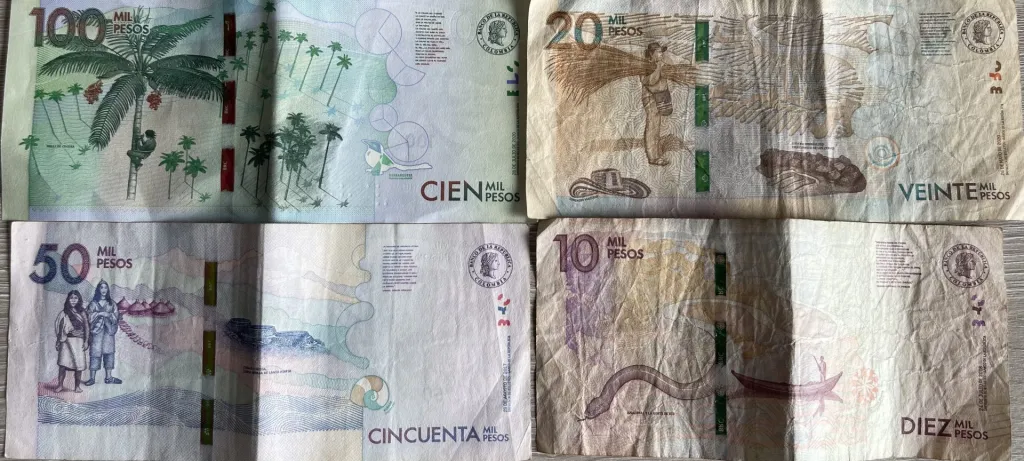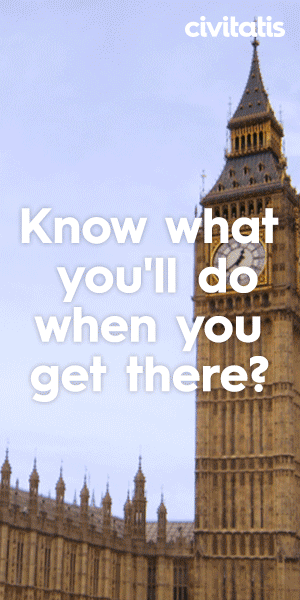Dealing with foreign currency and knowing what to pay for goods and services while traveling can be daunting. But getting cash in Bogotá, or throughout Colombia, is relatively easy.
Many stores and larger chains now have tap and go payments in Colombia. Meaning you can pay for goods and services using Apple Pay, Android Pay or Google Pay.
For everything else, I would recommend getting cash from Western Union or through another international transfer service. Personally, I won’t use ATM machines in Colombia. Here’s a quick guide with everything you need to know about cash and currency exchange in Bogotá Colombia. Including how to avoid counterfeit cash.
Currency exchange and using cash in Bogotá Colombia
The Currency In Bogotá Colombia
The currency in Colombia is the Colombian Peso or COP. You will need to pay for goods and services in COP while in Colombia. Dollars and Euros are rarely excepted. You should not expect to pay in an alternate currency while in Colombia.
Beware Of Counterfeit Bank Notes In Colombia!
All bank notes, no matter how small, do have counterfeits in circulation in Colombia. The most common denominations for counterfeits are 20k, 50k and 100k. In order to avoid counterfeit currency, you should check all of your change thoroughly.
Check all the notes you’re given have a texture and that one side of the note has a color change hologram and the other, a metallic strip that changes color. On the metallic strip, you’ll notice that it has BRC printed on it. If the strip is blank, the note is a fake.
In the videos below, and on the Banco República website, you can see the bank notes in circulation. Use the videos below and the Banco de la República website to become familiar with the 20k, 50k and 100k bank notes. And in particular, pay attention to where on the bank notes the security features are and what they look like.
Travel Tip: While in Colombia, if you’re unsure if a note you’re being handed is a fake, ask the customer behind you. Colombians will tell you if they think a bank note is fake.
Exchange Rates In Colombia
Unlike countries such as Argentina, Cuba, Iran and the others that I regularly write about on this website, there are no black market currency exchange rates in Colombia. The COP is relatively stable against all major currencies (AUD, CAD, Euro, GBP, USD).
You’ll be able to find businesses specialized in currency exchange in all major airports, shopping centers and in business districts throughout Colombia. They are prolific and they can be located on Google Maps.
Yet, it’s been my experience that there isn’t a great deal of difference in the exchange rates offered by the different money changers that are scattered throughout Bogotá. And you should get close to the rate displayed on XE, minus the brokers fees and charges.
In Colombia, I’ve found that exchanging foreign cash, instead of using an electronic means to get cash, is less than ideal. And I try to avoid exchanging foreign currency cash for Colombian pesos (COP) wherever possible.
While the ATM’s generally have long lines and high fees, international money transfer services like Western Union often produce better rates with lower fees. And they have none of the long lines associated with using an ATM to get cash. They also have a much lower risk of robbery.
Is There Western Union In Bogotá?
Western Union has many locations throughout Bogotá and the rest of Colombia. These can be quickly located on Google Maps. Yet, I have a personal preference for Western Union outlets in the safer parts of Bogotá and that are inside shopping malls.
I use Western Union like an ATM in Colombia. I send myself money and I collect it in cash, in the store. I send myself larger amounts in single transactions in order to minimize transaction fees and charges. And I like that Western Union in Colombia has biometric security (finger print scanner) in order to secure the transactions.
If you’re going to use Western Union while in Colombia, like I do, I would suggest downloading the Western Union app for your country and becoming familiar with it before traveling. I would also suggest using a VPN in Bogotá, to protect your banking credentials and passwords when logging in.
I personally use and recommend NordVPN, which is available at www.nordvpn.com
Beware Of Cash Machines (ATM) In Colombia
Cash machines or ATMs in Colombia can really scalp you on fees and charges. I personally avoid Automatic Teller Machines (ATM) in Colombia due to their high fees, long lines and lack lustre security. Unless I’m desperate for cash, I won’t touch an ATM in Colombia.
I also need to add a warning here, for the more novice travelers. Cash machines in Colombia attract criminals. Never use an ATM on the street in Colombia. If you do use an ATM on the street, you’re putting yourself at an increased risk of armed robbery.
If you absolutely must use an ATM, use one that’s inside a shopping mall. Check for credit card skimming devices and ensure that nobody is observing you, while you’re using the ATM. There are many horror stories online from people who have been followed after using an ATM and then robbed.
Travel Tip: Always pay with a card or tap and go payments whenever it’s available. By avoiding cash and ATM machines, you’re less likely to encounter counterfeit notes and crime.
Can I Use My Bank Card To Pay In Colombia?
‘Tap & Go’ payment options will work almost everywhere, with the exception of the smallest corner stores and street vendors. Bars, restaurants, hotels, coffee shops and chain convenience stores all accept cards and you can use Apple Pay and Google Pay. And I use electronic payment options everywhere it’s accepted.
Yet, I don’t use my actual bank card. Card skimming, cloning and wire fraud are very common in Colombia. But in particular, they’re prolific in Bogotá. So, my main bank card that has all of my funds is not the card that I will use to pay. Instead, I use prepaid debit cards that I can top up instantly and that insulate my main bank accounts.
I was using a Citibank travel debit card and I’ve since switched to a Wise Travel Debit Card. The Wise Debit card is free, has no fees and gives the mid market exchange rate. It’s the cheapest to use in Colombia. Yet, it also does away with the ‘verified by visa’ text messages and everything can be managed exclusively through the Wise mobile application.
I recommend that everyone coming to Colombia, get themselves a free Wise debit card.
Where Can I Get More Information On Bogotá?
If you’re planning to visit Bogotá on your next vacation, or you’re simply interested in Colombia in general, you should read my Bogotá City Guide.
My Bogotá City Guide is updated regularly. And it seeks to answer all of your questions regarding Bogotá and Colombia in one place. Read my Complete Bogotá City Guide.







